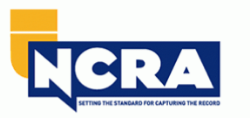Trial Presentation Reliable Services to Support Litigation and Case Success
Trial Presentation Reliable Services to Support Litigation and Case Success
Blog Article
Astound the Court: Necessary Aspects of a Powerful Trial Presentation
In the world of lawful advocacy, the ability to astound a court is vital to the result of a trial (trial presentation). Crucial aspects such as comprehending the audience, crafting an engaging narrative, and mastering spoken and non-verbal interaction are essential components of a reliable presentation. The critical use of aesthetic aids can significantly improve understanding and retention of vital disagreements. As these factors intertwine, they form a natural strategy that not just informs yet also involves jurors on multiple degrees. What specific methods can truly change a basic discussion into a remarkable experience for the jury?

Understanding Your Audience
Comprehending your target market is a crucial aspect of effective trial presentation. An effective discussion rests on the capacity to realize the demographics, worths, and predispositions of jurors. This comprehension informs how disagreements are mounted, proof exists, and sob stories are crafted, making certain that the message reverberates with the jurors on an individual degree.
Research indicates that jurors come from varied histories and may have varying degrees of comprehending concerning legal process. Furthermore, comprehending the jurors' potential prejudices and life experiences enables the trial presenter to prepare for arguments and address issues proactively.
Effective test discussion also involves observing jurors' responses during the proceedings. Being in harmony with non-verbal signs can supply insight into their involvement and receptiveness, allowing for real-time changes in technique. Ultimately, an extensive understanding of the audience not just improves interaction however additionally develops rapport, boosting the possibility of a desirable result. Involving with jurors as individuals as opposed to a collective device is vital in fostering a solid link in the court.

Crafting an Engaging Narrative
Crafting a compelling story is important in guiding jurors with the complexities of an instance. A well-structured narrative not just simplifies intricate lawful concepts yet also involves jurors on an emotional degree, making the info more relatable and unforgettable.
To achieve this, lawyers must start by determining the core message they wish to share. This message ought to reverberate with the jurors' worths and experiences, promoting a link that transcends simple realities. The narrative must unfold rationally, offering events in a clear series to avoid confusion. This sequential approach can assist jurors adhere to the progression of events, stressing cause and impact.
Integrating human components-- such as individual stories or narratives-- can better enhance the narrative's effect. These aspects stimulate compassion, allowing jurors to imagine the effects of the instance on realities. Furthermore, using a consistent style throughout the discussion reinforces the main argument, making it much easier for jurors to preserve critical factors.
Inevitably, an engaging story changes a test presentation from a simple recounting of facts into an influential tale that astounds the court, urging them to mull over with both factor and feeling.
Using Aesthetic Aids
Incorporating aesthetic help right into a trial presentation can dramatically boost jurors' understanding and retention of info. Visual materials such as graphes, representations, photographs, and video clips can change complicated legal principles and proof into conveniently absorbable styles. By involving numerous senses, these aids enable jurors to imagine the More Bonuses case's essential elements, making it less complicated for them to comply with along and understand intricate details.
In addition, well-designed visual help can highlight crucial factors and emphasize connections between various pieces of proof. For instance, timelines can effectively highlight the sequence of occasions, while annotated images can make clear specific information relevant to the instance. This not just help in understanding however additionally strengthens the story presented by the attorney.
Overly complicated or messy visuals might bewilder jurors and detract from the message. Inevitably, effective visual communication can be a powerful tool in convincing jurors and assisting them get to notified verdicts.
Understanding Verbal Communication
Reliable spoken interaction is critical in a trial Learn More Here discussion, as it offers as the main ways with which lawyers convey their disagreements and link with jurors. Simplicity in language cultivates understanding and assists jurors comprehend complicated concerns presented throughout the test.
Moreover, tone and pacing dramatically effect how messages are gotten. A certain tone communicates authority, while proper pacing permits jurors to take in details without feeling bewildered. Attorneys need to likewise differ their vocal inflections to emphasize bottom lines and maintain jurors' passion throughout the presentation.
Additionally, the organization of verbal arguments is important. Structuring the narrative rationally and coherently helps jurors comply with the attorney's logic, making it easier for them to maintain essential information. Utilizing convincing techniques, such as narration, can likewise enhance the emotional resonance of the arguments presented, consequently developing an extra extensive link with jurors.
Eventually, understanding verbal interaction not only enhances an attorney's situation but also fosters trust and rapport with the court, dramatically boosting the possibilities of a desirable verdict.

Involving With Body Language
Nonverbal communication plays a crucial role in test presentations, usually communicating messages that words alone can not express. Body movement, encompassing motions, posture, face expressions, and eye contact, dramatically influences just how jurors perceive the integrity and sincerity of the speaker. A confident position, with shoulders back and an open posture, can instill depend on, while closed-off body language may recommend defensiveness or uncertainty.

Faces need to reflect the feelings associated with the instance, strengthening the story being provided. For circumstances, a genuine expression throughout a poignant minute can elicit empathy and reinforce the sob story. Inevitably, mastering body language is essential for efficient test presentations, as it improves verbal interaction and establishes a compelling visibility that resonates with the court.
Final Thought
To conclude, mesmerizing the jury necessitates a calculated technique that includes comprehending the audience, crafting an engaging narrative, utilizing aesthetic aids, grasping spoken interaction, and involving via body movement. Each component plays a critical role in developing an effective test presentation that reverberates with jurors on both emotional and intellectual degrees (trial presentation). By incorporating these parts effectively, lawful professionals can substantially enhance their capability to persuade and influence jury decision-making
Report this page